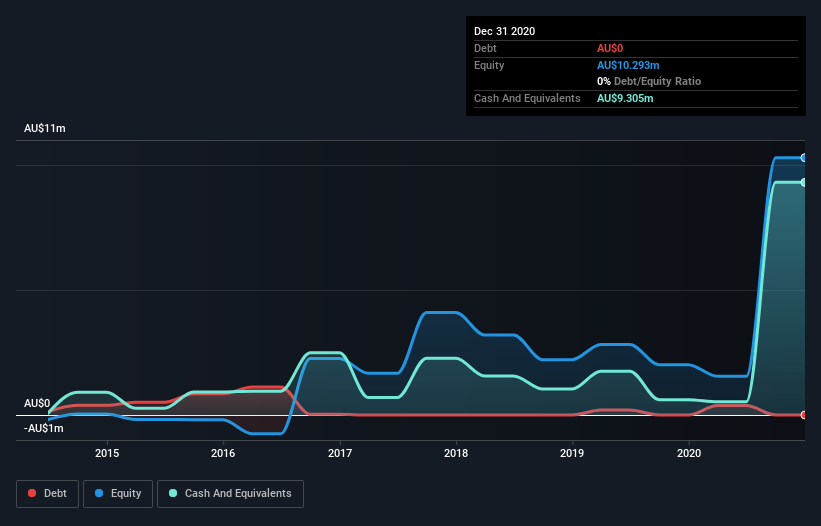Here's Why We're Not At All Concerned With Optiscan Imaging's (ASX:OIL) Cash Burn Situation
Even when a business is losing money, it's possible for shareholders to make money if they buy a good business at the right price. Indeed, Optiscan Imaging (ASX:OIL) stock is up 949% in the last year, providing strong gains for shareholders. Nonetheless, only a fool would ignore the risk that a loss making company burns through its cash too quickly.
Given its strong share price performance, we think it's worthwhile for Optiscan Imaging shareholders to consider whether its cash burn is concerning. In this report, we will consider the company's annual negative free cash flow, henceforth referring to it as the 'cash burn'. We'll start by comparing its cash burn with its cash reserves in order to calculate its cash runway.
Check out our latest analysis for Optiscan Imaging
How Long Is Optiscan Imaging's Cash Runway?
A company's cash runway is calculated by dividing its cash hoard by its cash burn. When Optiscan Imaging last reported its balance sheet in December 2020, it had zero debt and cash worth AU$9.3m. In the last year, its cash burn was AU$589k. That means it had a cash runway of very many years as of December 2020. Even though this is but one measure of the company's cash burn, the thought of such a long cash runway warms our bellies in a comforting way. The image below shows how its cash balance has been changing over the last few years.
How Is Optiscan Imaging's Cash Burn Changing Over Time?
In the last year, Optiscan Imaging did book revenue of AU$2.4m, but its revenue from operations was less, at just AU$1.4m. Given how low that operating leverage is, we think it's too early to put much weight on the revenue growth, so we'll focus on how the cash burn is changing, instead. The 69% reduction in its cash burn over the last twelve months may be good for protecting the balance sheet but it hardly points to imminent growth. In reality, this article only makes a short study of the company's growth data. This graph of historic revenue growth shows how Optiscan Imaging is building its business over time.
How Easily Can Optiscan Imaging Raise Cash?
There's no doubt Optiscan Imaging's rapidly reducing cash burn brings comfort, but even if it's only hypothetical, it's always worth asking how easily it could raise more money to fund further growth. Generally speaking, a listed business can raise new cash through issuing shares or taking on debt. One of the main advantages held by publicly listed companies is that they can sell shares to investors to raise cash and fund growth. We can compare a company's cash burn to its market capitalisation to get a sense for how many new shares a company would have to issue to fund one year's operations.
Optiscan Imaging has a market capitalisation of AU$268m and burnt through AU$589k last year, which is 0.2% of the company's market value. So it could almost certainly just borrow a little to fund another year's growth, or else easily raise the cash by issuing a few shares.
So, Should We Worry About Optiscan Imaging's Cash Burn?
As you can probably tell by now, we're not too worried about Optiscan Imaging's cash burn. In particular, we think its cash runway stands out as evidence that the company is well on top of its spending. But it's fair to say that its cash burn reduction was also very reassuring. Taking all the factors in this report into account, we're not at all worried about its cash burn, as the business appears well capitalized to spend as needs be. An in-depth examination of risks revealed 3 warning signs for Optiscan Imaging that readers should think about before committing capital to this stock.
Of course Optiscan Imaging may not be the best stock to buy. So you may wish to see this free collection of companies boasting high return on equity, or this list of stocks that insiders are buying.
This article by Simply Wall St is general in nature. It does not constitute a recommendation to buy or sell any stock, and does not take account of your objectives, or your financial situation. We aim to bring you long-term focused analysis driven by fundamental data. Note that our analysis may not factor in the latest price-sensitive company announcements or qualitative material. Simply Wall St has no position in any stocks mentioned.
Have feedback on this article? Concerned about the content? Get in touch with us directly. Alternatively, email editorial-team (at) simplywallst.com.


